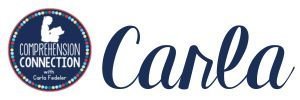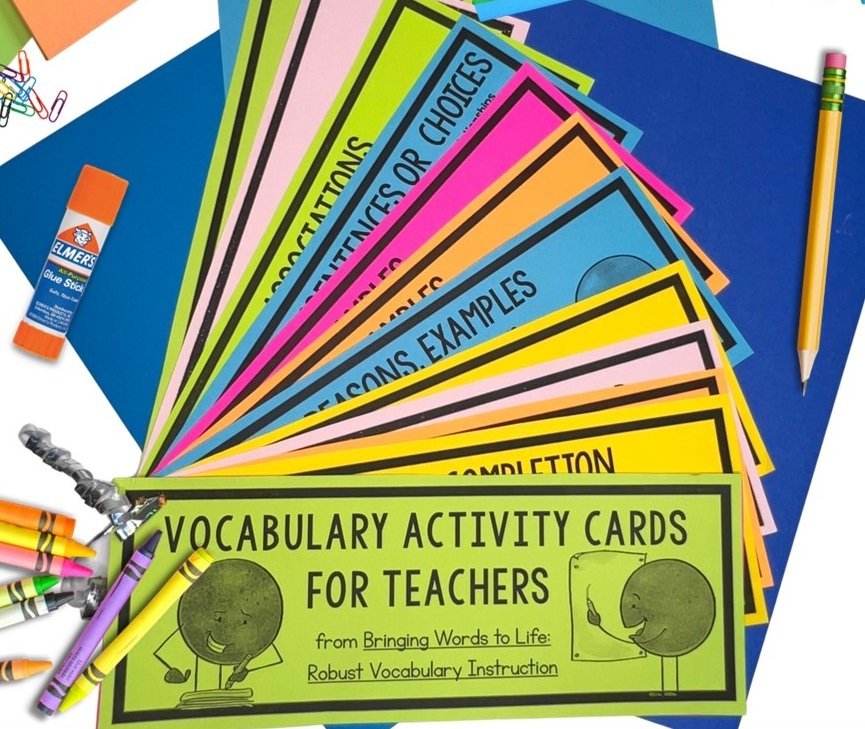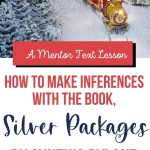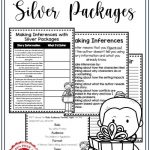
Making inferences is one of the toughest skills for young readers to learn, and I think using Silver Packages to model inferences is just the thing your kids need. For students who lack experiences or who don’t pick up on story clues authors share, explicit instruction is needed to help make sense of the unknown.
With think aloud and targeted instruction, we can help struggling readers learn how to make inferences. Today, I’m going to share how you can use this lovely Appalachian Christmas story to model inferences for your students.
Introducing inferences with Silver Packages:
Cynthia Rylant’s book, Silver Packages, shares the true story of the Christmas train which began running in 1943. Each year, on December 23rd, it travels through the mountains to bring gifts to children awaiting its arrival. Frankie, the main character, doesn’t have much. His shoes are worn through, and he’s without mittens. Nevertheless, like most children, he has one gift in mind. Rather than getting the exact thing he wants, he receives things he really needs. Needless to say, he learns about needs versus wants. He learns he really needs warm socks and mittens even though he wants a doctor’s kit.
Along with learning about needs and wants, students also discover what life is like in Appalachia. We learn about traditions and about Cynthia Rylant’s life in the mountains she loved so much through Silver Packages. We also learn from Cynthia’s carefully selected writing vocabulary, word choice, expression, and craft.

silver packages read aloud
modeling inferences with silver packages
When I prepared my teaching unit for this book, I used a Before-During-After format like all of the other units I’ve developed. When I chose the focus skills, I thought about the skills that best fit the plot. Certainly, there are many skills that would work well with Silver Packages. Here’s the list of what I’ve included:
- Schema development about Gift Giving
- Story Vocabulary
- Visualizing Story Details
- Sequencing Events
- Making Comparisons Across Texts
- Story Retelling
- Questioning (Question-Answer Relationship)
- Writing Extension (Remembering Others Class Book)
If you prefer purchasing on TPT, click [HERE]
modeling inferences with an anchor chart

For the remainder of my post, we’ll focus on making inferences. As I mentioned earlier, this is a challenging skill for most students, and they need lots of practice with various types of activities.
Whenever I am teaching a skill, often my first step is to create an anchor chart with all of the key details. You can do this on chart paper or use the printed chart I’m sharing. I love having an anchor chart or powerpoint to reference as I explain the skill process. The chart to the left is part of the download I’ll share at the end of the post.
practice with text examples from Silver packages
As the chart is used, it’s important to give real life examples first and then, as the story is shared, pausing and questioning about story quotes and events helps the students see and hear how readers think about the text. This also helps kid make connections to their reading.
Once students have a feel of how to infer, it’s time to practice with your book examples. Now, when you do this, you want to be very familiar with the text and have specific examples in mind that you will use for discussion. I would suggest blowing up the T-chart to poster size and provide your students with sticky notes.
As you read Silver Packages, share the story examples selected and allow your students to turn and talk with their elbow partners to share what they infer, The sticky notes can be “pasted” to the poster. The page size version can also be used if you’re in a pinch.

Lesson Extension:

Since many of the inferences made will focus on Frankie, it makes sense to write a RAFT paper from Frankie’s Point of View. A RAFT paper stands for Role Audience Format and Topic. RAFT papers are intended to be used as a way to deepen understanding, and if you’ve followed my blog long, you know the reading-writing connection is really important to me.
I love teaching writing, and I personally feel the best way to improve as readers and writers is to practice with real texts as exemplars for modeling. So, whenever we can work in writing, I do. This means extended response activities, journal writing, graphic organizers, and of course, process writing with related prompts.
The writing assignment is for students to take the Role of Frankie and write a memoir (Format) for the Applachian children (Audience) about his memories of the Christmas Train and how he was inspired by it. Once completed, I think sharing them orally would be a great idea as it will allow you to work on the themes included in the text.
to grab the free resource shared here…
Other mentor text Posts you might like:
- 5 SIMPLE LESSON IDEAS FEATURING BEAR SNORES ON YOUR KIDS WILL LOVE
- HOW TO TEACH THEME WITH EACH KINDNESS
- HOW TO TEACH FIGURATIVE LANGUAGE LIKE A PRO WITH THE SNOW DANCER
- 3 EASY TO USE LESSON IDEAS FOR TWO BAD ANTS THAT WILL NOT FAIL!
- EASY WAYS TO TEACH CONTEXT CLUES USING CROWN: AN ODE TO THE FRESH CUT
- HOW TO TEACH PERSUASIVE WRITING LIKE A BOSS WITH I WANNA IGUANA





















One Response
I love your holiday ideas for Silver Packages. I would like to use them if possible.